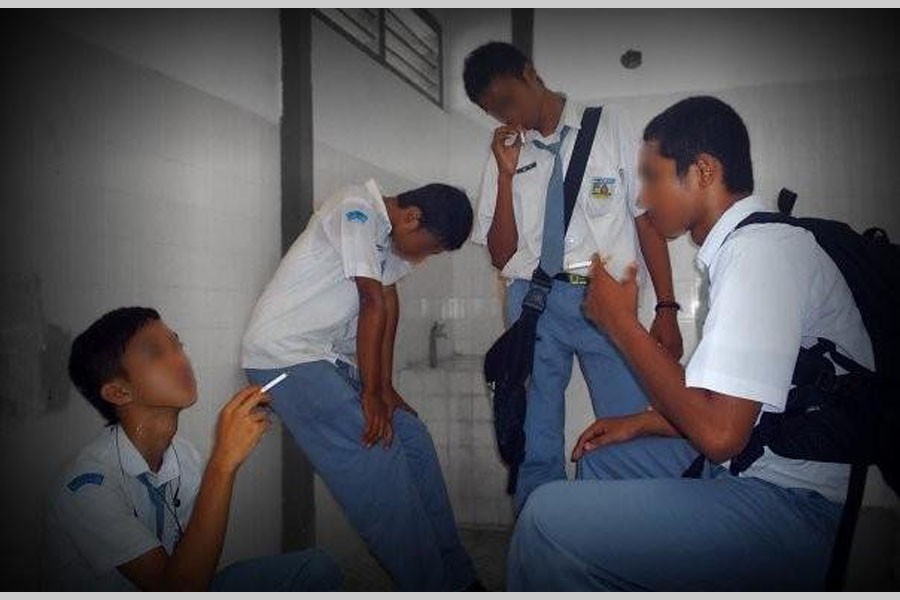Not long ago street urchins used to be seen roaming the Dhaka streets aimlessly. Some were seen with jute sacks slung over their shoulders. They belonged to the groups of rag pickers. They would keep themselves busy rummaging through garbage piles in search of objects having resale value. These once slum-dwelling, floating, adolescent boys and girls no longer move places. They are seen occupying stretches of street islands or abandoned government spaces, and engaging in dope taking. Despite being dismissed as a mere public nuisance by ordinary people, it's a scene not encountered in Dhaka before. It comprises children, led by an older youth, who get hooked on glue-sniffing. This new style of dope-taking is incredibly inexpensive. What the addicts need is a small sum of money to buy a pinch of special glue. Upon blowing a balloon and putting the glue into its air-filled space, the teenagers, sitting in a circle, begin inhaling toluene and other solvents from inside the balloon.
The impact is a bout of euphoric feeling that lasts for quite some time. Widely used abroad, especially in Central America, long-term glue-sniffing causes kidney failure, and may lead to death. Glue-sniffing is a relatively lighter addiction. It's one of the easiest ways to taking to harder drugs like marijuana, heroin, and lately, 'yaba', the concoction of methamphetamine and caffeine. 'Methaphetamine' is a potent central nervous system stimulant. Known as the crazy pill in its place of origin in Southeast Asia, it enters Bangladesh under the name of 'yaba'. Due mainly to their rootless state exacerbated by hunger and other deprivations, these glue-sniffing adolescents and post-teen youths fall prey to the drug syndicates. Their operators allegedly recruit them as drug-runners and peddlers. Due to strong surveillance and the countrywide busting of drug dens, the street children find the doors shut on the illicit means of earning their livelihood. Then they are made to turn to criminal activities. Their choosing of a wrong path is prompted by utter necessity.
The issue is linked to deeper socio-economic dynamics in the urban landscape. Therefore, the question invariably arises as to why these once-roaming and free children have ended up being the slaves of a somnambulistic world created by doping. The administration's targeted intervention on the drug front coupled with community involvement is imperative to arrest the rot. Although conspicuous endeavours to wean the street children off drug addiction are still awaited, many youths are nonetheless found engaged in literacy programmes. These projects are targeted at both street children and teenagers vulnerable to falling victim to drug addiction.
Notwithstanding the spectacles of idle teenage boys and girls being drawn into the so-called 'gossip sessions', an alarming message underlies it. According to different surveys, it is the large cities where these drug sessions continue to be held. Theoretically, the city-based law enforcement agencies and youth welfare entities are supposed to come forward to the rescue of these doomed teenagers. The task has been long overdue on their part. It's because with the wayward segment of adolescent population going scot-free for an indefinite period, the spectre of a 'lost generation' devouring society faster than has been feared might prove an unpalatable reality. Nothing short of assertion of household and neighbourhood obligations along with community and local leadership level activism can lead the deviant teenagers back on the right path.


